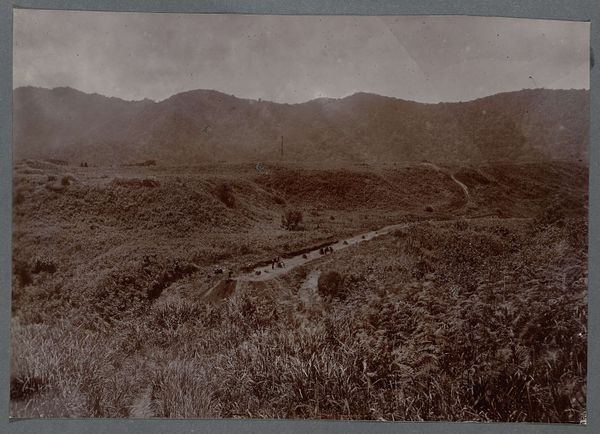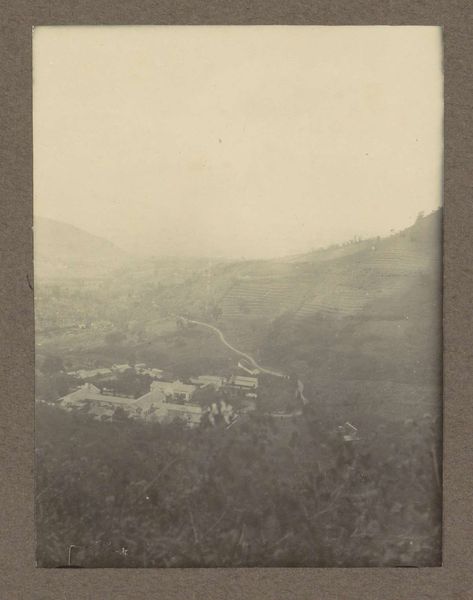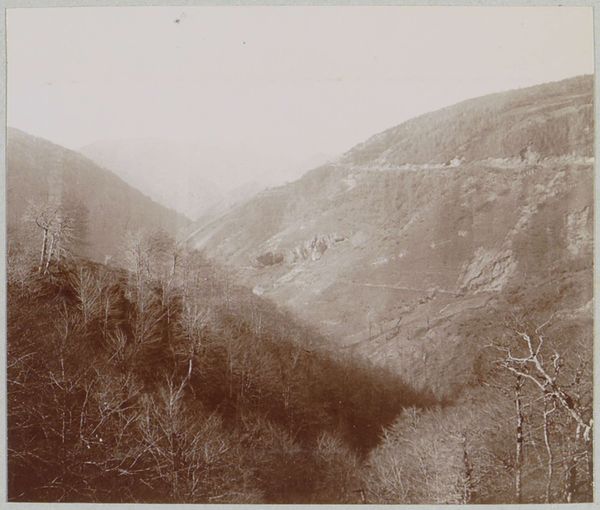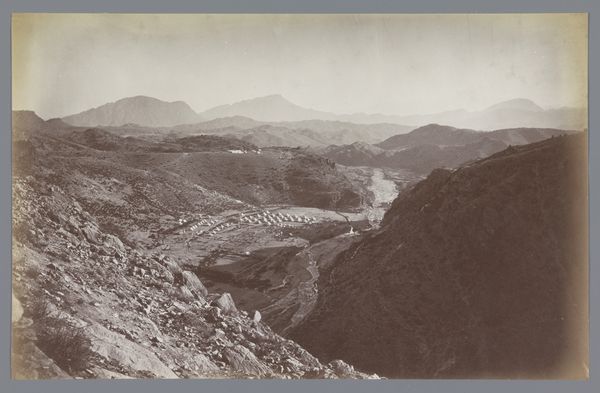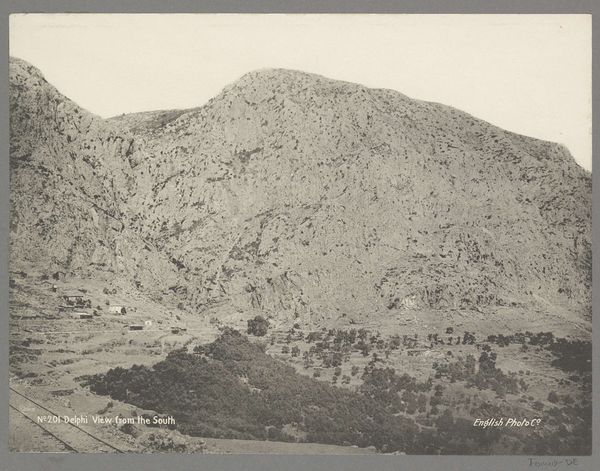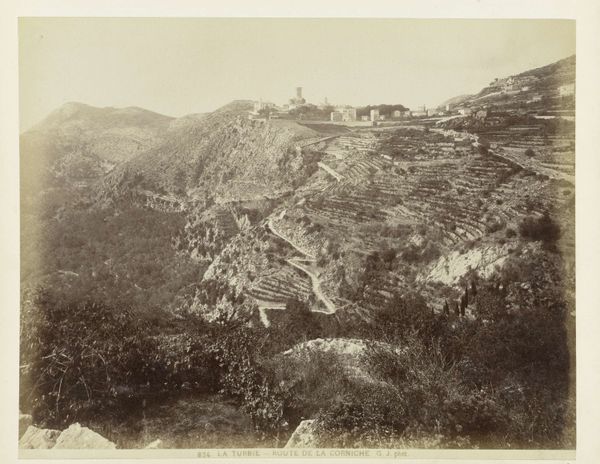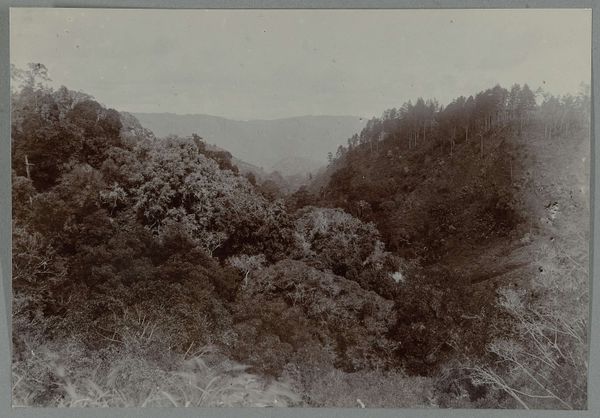
print, photography
#
organic
#
pictorialism
# print
#
landscape
#
photography
Dimensions: height 70 mm, width 82 mm
Copyright: Rijks Museum: Open Domain
Editor: This photograph, taken in 1904, is titled *Berglandschap, vermoedelijk in de Pyreneeën*, which translates to "Mountain Landscape, Probably in the Pyrenees". It's a print by an unknown photographer, held at the Rijksmuseum. The sepia tones create such a soft, almost melancholic mood. What do you see in this piece? Curator: I see a fascinating commentary on humanity's relationship with the land. Pictorialism, the style in which it was made, was prevalent at the time, an attempt to elevate photography to the status of art, often mimicking painting. Consider the deliberate softness of the focus, the way it almost romanticizes the landscape, perhaps masking the labor and the political tensions inherent in land ownership. What do the empty hills signify to you? Editor: It could mean isolation. I also note the building nestled far in the distance. I initially viewed it as picturesque, but in light of your remarks, it perhaps suggests land usage or perhaps speaks about access. Curator: Precisely. Whose access are we talking about? Whose narrative is being presented and, crucially, whose is being omitted? In this context, the “organic” quality highlighted in its description seems almost… sanitizing. What implications arise if the area is presented to us an ‘organic’ vista? Editor: It's like a controlled nature, an idealized view of it. As if nature is molded by specific hands or powers that determine what we see and value, doesn't it? Thank you! Curator: Yes! And acknowledging this forces us to reconsider how landscapes are depicted and whose interests they serve. Editor: Thank you! I’ll never see landscape photography the same way again.
Comments
No comments
Be the first to comment and join the conversation on the ultimate creative platform.
